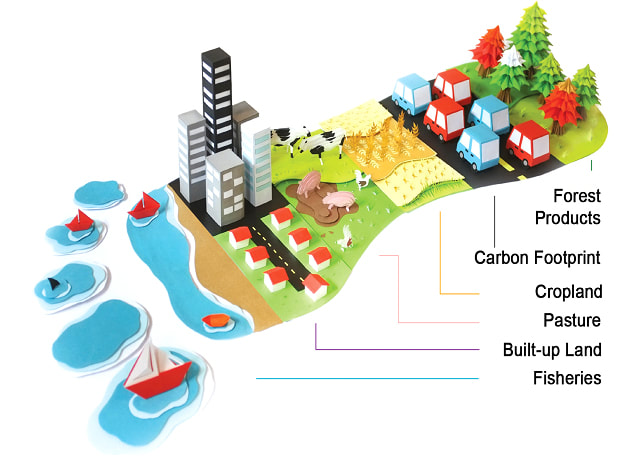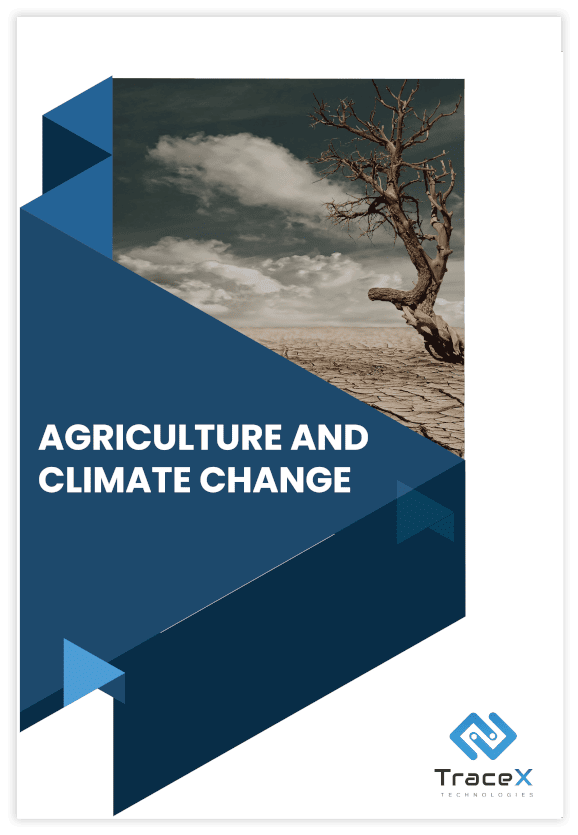Contact: +91 99725 24322 |
Menu
Menu
Quick summary: Digitization of the supply chain is one way to reduce carbon emissions. Tracking carbon emissions with end-to-end traceability solutions should be a competitive edge to organizations to drive the UN’s Sustainable Development Goals. Carbon Traceability should be the way forward to reach the net zero goals.

Carbon traceability should be the route to go in order to achieve net zero goals. Using end-to-end traceability technologies to track carbon emissions could give businesses a competitive advantage in achieving the UN’s Sustainable Development Goals.
Avoid excessive plastic
Switch to a Vegan diet
Save water
Cut energy costs
Buy ecofriendly products
The list goes on, all slogans to reduce the carbon footprint, a buzzword talked about so often.
Carbon footprint is the total amount of greenhouse gas emissions produced by any product, organization, and even a person. It is the sum of emissions that occurs in a product’s life cycle. Greenhouse gases are the gases commonly emitted like carbon dioxide, methane, nitrous oxide, and other fluorinated gases which trap the heat in the atmosphere causing global warming and hence a climatic change.
It is summing up the emissions in all the activities that you do. In other words, it measures the environmental impact your lifestyle has. For example, when you drive every day to work, your carbon footprint is more than your friend who uses public transport because you are generating more carbon emissions. It is all measured in CO2e(Carbon dioxide equivalents) and is a standard unit for measuring the carbon footprint. It is essentially expressed as an amount of carbon dioxide that would have the equivalent impact.

Do you know what an Ecological Footprint is? It measures the extent to which mankind is using nature’s resources faster than they can regenerate. It is a tool to address the underlying issue of sustainable consumption. The ecological footprint measures how much bio-productive area, land, or water, humanity would require to produce on a sustainable basis the renewable resources it consumes and to absorb the waste it generates. Biocapacity measures the bio-productive supply available within a certain area of land.
These two concepts of Ecological footprint and Biocapacity were coined by the 1Global Footprint Network (GFN) and are quantified as Global Hectares (gha). If the ecological footprint of the human population is greater than the biocapacity then the environment is supposed to be unsustainable.
And do you know that the worldwide human ecological footprint is 2.8 global hectares/per capita while the total worldwide biocapacity is 1.7gha/capita?
That means humanity is using 1.65 times as many resources sustainably available. Whereas low-income countries have a typical footprint of 1.0 gha/capita, high-income countries have a footprint of 6.2 gha/capita. When carbon footprint is reported with context to the Ecological footprint, the tones of carbon dioxide emissions are expressed as the amount of productive land area required to sequester those carbon dioxide emissions.

Learn about the interconnection between agriculture, climate change and how sustainable agriculture practices can help mitigate and adapt to its impacts
The process of capturing and storing carbon dioxide from the atmosphere is known as Carbon Sequestration. Stabilizing carbon in solid and dissolved form prevents global warming. Carbon dioxide is produced both in nature and through human activities.
The burning of fossil fuels and natural gases for transport and power generation leads to the release of carbon dioxide. The natural factors that emit carbon dioxide are the decomposition of organic matter and forest fires. Carbon dioxide traps heat and causes climatic changes. Carbon sequestration is not the only solution to this Carbon problem. It is just that the planet does not have the biocapacity to neutralize the carbon buildup.

Climate change, deforestation, unsustainable fishing practices, overgrazing and food hazards, and extinction of species are the major ecological threats today.
The planet’s resources are being consumed by seven billion people all over the world. According to UN predictions, the global population could reach 9.7 billion by 2050. This would surely increase the emissions and deplete the natural resources. Understanding carbon footprint can help limit the impact of your consumption on the environment.
The Paris Climate Agreement in 2015 was a historic step in recreating a fossil-free future for the planet. Nearly 200 countries around the world agreed to keep global temperature rise well below 2 degrees Celsius and further agreed to limit the increase to 1.5 degrees above pre-industrial levels. This agreement aimed to strengthen the global response to climatic change. The forces like agriculture and food, consumption, deforestation would be the drivers to Sustainability.
The COP 26 summit last year brought the parties together to accelerate the actions towards the goals of the Paris agreement and urged companies to wake up to address the carbon impact. Digitization of the supply chain is one way to reduce carbon emissions. Tracking carbon emissions with end-to-end traceability solutions should be a competitive edge to organizations to drive the UN’s Sustainable Development Goals.
Traceability is becoming a priority with organizations across the globe. Traceability helps organizations to meet their sustainability objectives, aligning with their business goals and building a responsive and resilient system. Traceability solutions will be able to build efficient value chains with minimal disruptions and certify sustainable products and processes. The provenance of products, sourcing practices, and other data can be captured to optimize operations, reduce wastage and bring transparency to the consumers.
Read about the Sustainable agriculture practices that brands can adopt.

Covid 19, trade rub-offs, and the recent disruption of the Suez Canal crisis have proved how critical traceability is to sustainability and staying ahead in the market. A growing number of organizations would expect suppliers to implement traceability practices for both food quality and a resilient supply chain.
A new era of corporate responsibility will mandate the requirement of supply chain transparency and the regulators along with the necessity for quality standards will demand diligence in social and environmental responsibility.
The Global State of Traceability survey conducted with more than 150 senior supply chain leaders by Bain says,” 68 % of executives view Traceability as ‘very or extremely important.”
The key to carbon tracking is transparency and this needs to be accurate and complete. The data regarding the carbon emissions at each stage needs to be gathered or at least estimated. This requires greater integration and coordination between multiple nodes in the ecosystem. Organizations need to have better visibility and insights to make decisions on the data collected.
Read how blockchain can reduce carbon footprints through data management
Blockchain provides the right platform to collect and track trusted data accurately and reduce the carbon footprint in the food supply chain. Capturing carbon measurement across all supply chain participants into an immutable ledger facilitates audit trails, assuring traceability, security, and accountability. This platform helps to trace the life cycle of a particular product, verify its origin and measure how the carbon footprints increment at each stage in the supply chain.

The carbon emissions can be tracked from the producer to the end consumer in the agriculture value chain. The stakeholders that purchase the crops have very little visibility on the carbon footprint generated and even though it is captured, they are lost in the next transition point due to lack of interoperability. This can be addressed by a few practices that can be incorporated among the various stakeholders in the chain.
Agriculture and Deforestation are the important causes of greenhouse gas emissions. They make up a large share of the carbon footprint The farmer needs to implement smart agriculture practices by evaluating the impact on the environment. The processors and the logistics providers need to consider sustainable initiatives in their processes and the end consumers have to make informed purchases. Adoption of climate-smart practices, creating new revenue streams to those who use this technology, and following agronomic practices to reduce the carbon footprint will help out to reach the Sustainable Development goals.

Organizations need to be instrumental in bringing about a reduction in greenhouse gas emissions and lead the way to a net-zero, weeding out the roadblocks that come their way with the help of Carbon traceability.
The Kyoto protocol of 1997 paved the way for the carbon credit system. The carbon credit systems awards credits to organizations that exceed the nationally determined emission quota standards by reducing their carbon emission. 1 carbon credit is awarded to the organization that has reduced carbon emission equivalent to 10 tons of carbon dioxide or its equivalent gases. The carbon trade allows parties that emit a higher amount of carbon higher than the permitted limit to purchase or exchange credits from parties that have lowered their carbon emissions less than the permitted limits thereby balancing the carbon emissions emitted into the atmosphere.
Carbon trading brings value to the consumers and makes the planet a better place to live. Providing information on the carbon footprint of each product through carbon emission labels will bring transparency and the eco-friendly value of the product. Consumers will be encouraged to make informed decisions about their eco-friendly purchases. Carbon trading and Carbon emission systems can harness the power of Blockchain technology and re-engineer the food supply chains.
According to Bill Gates, “2We need better methods and tools to grow food, just like we need to find zero-carbon ways to move around and generate electricity.”
Carbon credit platforms- Get rewarded for climatic actions in real-time!
Supply chain sustainability should become a norm for all organizations.
Read about the Net-zero initiative, the role of traceability in carbon tracking and carbon trading, Tokenization of carbon credits, and reducing Carbon footprints through data management with Blockchain!
Read more